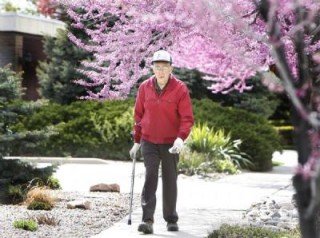DISCLOSURE: VT condemns the horrific tragedy committed by the NAZI Party against Jewish Citizens of Europe during Word War II known as the "Holocaust". VT condemns all racism, bigotry, hate speech, and violence. However, we are an open source uncensored journal and support the right of independent writers and commentors to express their voices; even if those voices are not mainstream as long as they do NOT openly call for violence. Please report any violations of comment policy to us immediately. Strong reader discretion is advised.
* By Matthew D. LaPlante Salt Lake Tribune *
The years have come and gone. But J Malan Heslop can still see it all.
Emaciated prisoners, dozens to a small room, many too weak to stand. Rotting corpses, naked in the dirt, discarded like garbage on the side of the road.

Sixty-five years after the May 8, 1945, liberation of the Ebensee concentration camp in Austria, the images remain fresh in Heslop’s mind. Even if they were not, they have been secured, for posterity, in his photographs.
And the 86-year-old Salt Lake City man is content to know that what he witnessed will not be lost when he is gone.
“We shouldn’t forget any of this,” he says.
‘All I ever wanted.’ Heslop’s father taught him to make photographs on a Kodak Folding Pocket camera. The pair developed baseball card-sized negatives in a makeshift darkroom in the kitchen of the family’s farm home in West Weber.
“I was obsessed,” Heslop remembers as he sits in his home, overlooking the Utah State Capitol, on Ensign Peak. “Photography was all I ever wanted to do.”
Read more at Salt Lake Tribune
ATTENTION READERS
We See The World From All Sides and Want YOU To Be Fully InformedIn fact, intentional disinformation is a disgraceful scourge in media today. So to assuage any possible errant incorrect information posted herein, we strongly encourage you to seek corroboration from other non-VT sources before forming an educated opinion.
About VT - Policies & Disclosures - Comment Policy



